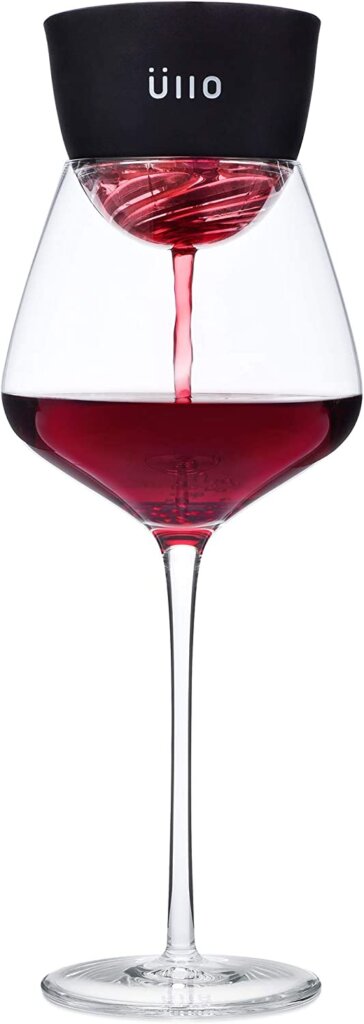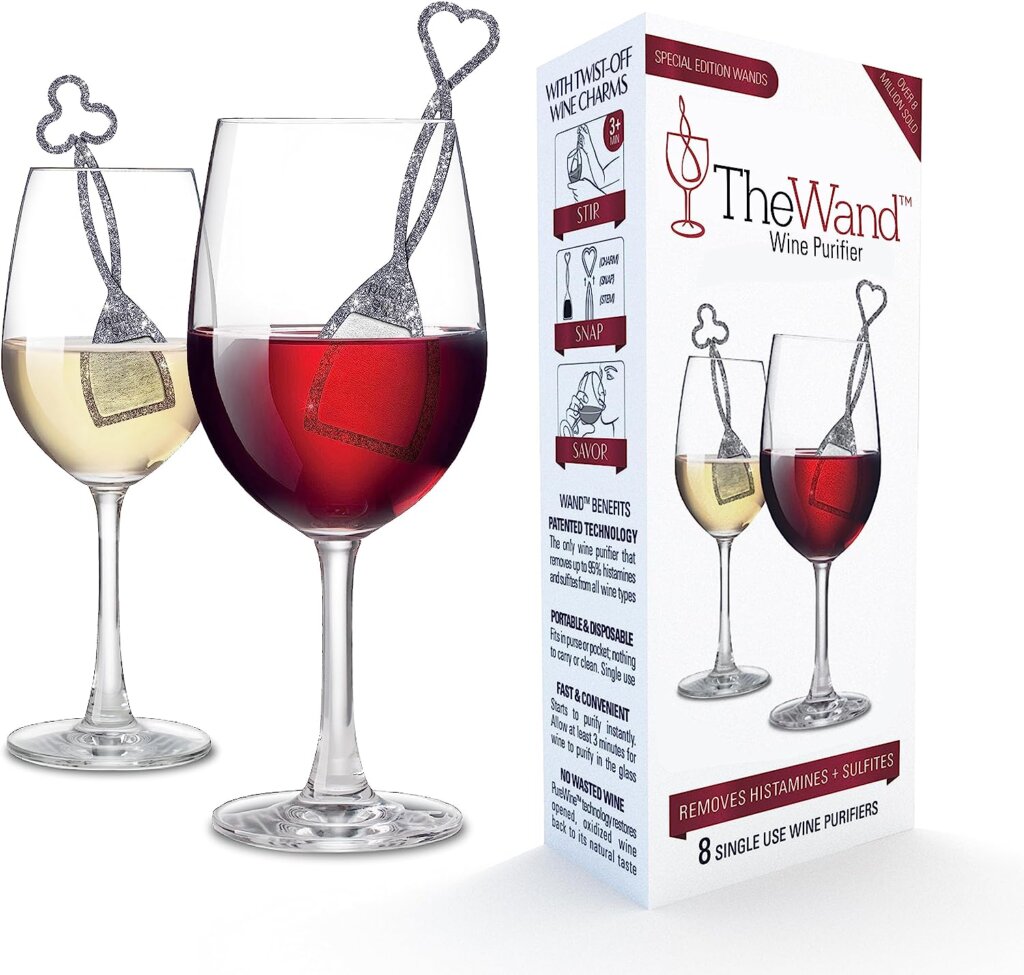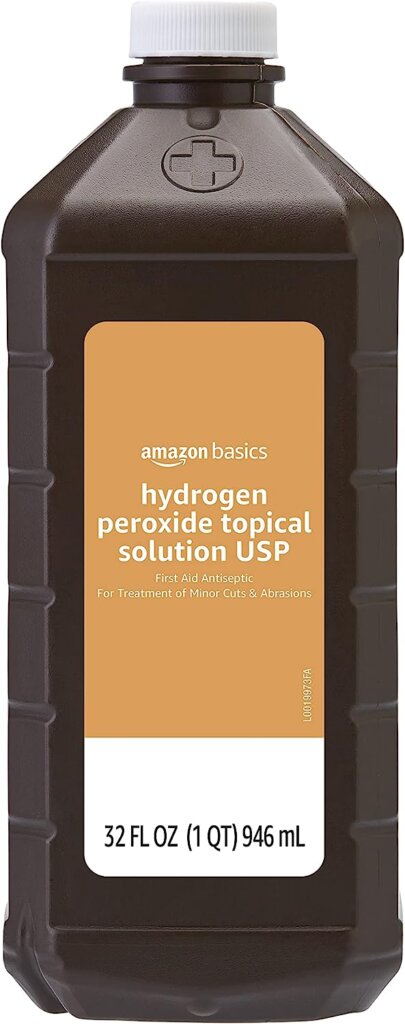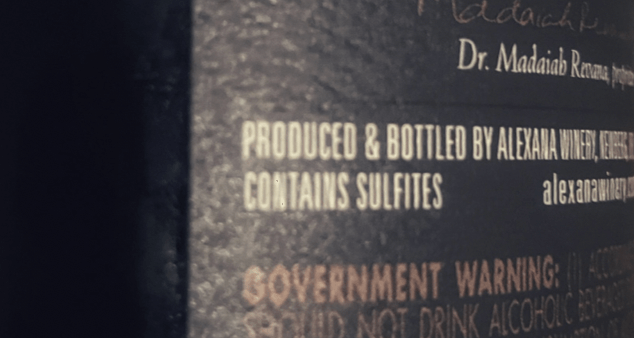How to Remove Sulfites From Wine

Sulfite, also known as sulfur dioxide (SO2), is a natural preservative. In food and beverage products, including wine, SO2 acts as an antioxidant and antibacterial compound.
Essentially, these compounds protect the wine in the bottle (and throughout the winemaking process), helping to prevent oxygen from interfering with the wine or microbes to grow and spoil it.
Sulfites are naturally occuring (they are a byproduct of fermentation), but SO2 is also added to grapes and/or wine at several steps during the winemaking process, including right before bottling.
Are Sulfites in Wine Bad for You?
Sulfites have gotten a bad reputation over the last few years and are often blamed for hangovers, headaches, or inflammation associated with drinking wine.

Often, these symptoms have other causes (such as overindulgence or other allergies) and are not related to sulfites at all.
That said, some consumers genuinely do have sensitivities to sulfites – this is especially true for asthma sufferers. If you’re suffering from a sulfite sensitivity, be sure to do some research and speak to your doctor before indulging.
Wine is not the only food or beverage containing sulfites. Most dried fruits have over five times the amount of sulfites as wine – just something else to be aware of as you seek lower sulfite options.
Various products are available to help reduce the amount of sulfites in your wine. Below are some popular options, including an inexpensive DIY one, to explore…
Step by Step Guide: Removing Sulfites from Wine
Time needed: 10 minutes
- Determine whether or not your wine has sulfites in it
Wine labels have a disclaimer that the wine includes sulfites, but a natural producer may include some verbiage about reducing added SO2.
Remember that organic wines have a lower maximum allowed, but can still contain sulfites.
A reputable producer will transparently share information with their customers about sulfite use, so if you’re really unsure, reach out to the winery directly.
Even wines from winemakers that don’t add any SO2 will still contain small amounts, because sulfites are a natural byproduct of certain winemaking processes.
Sulfite test strips are also available to purchase and check your wine. These can range from $25-75 dollars and typically come in a bulk pack of 100 strips.
- Decide which method of sulfite removal to use
There are many products available to reduce the sulfites in your wine at home, with varying degrees of effectiveness.
Be sure to do some research and read reviews before spending your money on an inadequate product.
The aforementioned sulfite test strips can come in handy here for determining the effectiveness of your chosen method! - Try out your chosen method of sulfite removal
Most methods are pretty easy and quick – they may involve running the wine through a special filter or adding an additional solution to the wine.
Most work in the amount of time it takes to employ – for example, once the wine is run through a purifier, it is ready to go. - Retest your wine with a sulfite strip
Take a moment to retest your wine with a sulfite strip to see how effective your chosen method was and make any tweaks for next time.
- Enjoy your wine!
What Are the Best Products for Removing Sulfites from Wine?
ChoiceWineries.com is reader-supported. When you buy through the links on our site, we may earn an affiliate commission. Visit our disclaimer page for more information.
Wine Purifiers
There are several wine purifiers on the market; Ullo is a popular brand. Wine is poured through the filter, which removes sulfites, and ends up in your wineglass or other pouring vessel. The units can be purchased on their own or as a set with a carafe or decanter.

Pros
- Can be used on whites, rosés, and reds
- Removes sulfites and histamines
- Also aerates the wine during use, which can help open up aromas and flavors. The Ullo’s aerator can toggle on/off to adjust for the style of wine at hand
- Dishwasher safe
- Compatible with other Ullo products, such as their decanter
- Can be used for just a glass of wine (the unit sits on top of the glass) or a bottle (in conjunction with a decanter)
- Subtle and stylish looking
- Does not add any additional chemicals or additives to the wine
Cons
- On the more expensive end, especially if you opt for one of their premium models
- Requires replacement filters, which adds to the cost
- Results can vary
- Typically takes 2-6 minutes, depending on the volume being treated, which is longer than some of the other options
Wine Wand(s)
Wine wands are easy to use stirrers that quickly remove sulfites and aerate the wine during stirring. PureWine Wands is a popular brand with an array of options, from materials (plastic or glass) and colors to quantities, with overall positive reviews.

Pros
- Less expensive than the purifier option, but requires a new wand each time, adding to the total cost
- Larger quantity packs (up to 72) of wands are available
- Available in plastic or glass (the plastic option is more affordable)
- Fits in a glass of wine for easy use
- Only takes three minutes per glass
- Removes sulfites and histamines
- Does not add any off flavors to the wine
Cons
- One time use per wand creates extra waste and adds to cost
- Cannot be used in a bottle, adding extra time for multiple glasses of wine
- Not recommended for use on sparkling wines
Wine Drops
Wine drops are a liquid solution added to your wine that mitigates sulfites and the astringent sensation caused by tannins. Drop It Is a well-received option with numerous positive reviews from users with sensitivities.

Pros
- A little goes a long way, making this a value-minded option – each bottle treats around 55 glasses of wine
- Removes sulfites and tannins
- Contains natural ingredients (hydrogen peroxide, egg white protein and sunflower lecithin)
- Gluten, soy and dairy free
- Easy to use; works in a matter of seconds
- When used as directed in the proper volume, it will not add off flavors to the wine
- Can be used in a variety of wine styles, including sparkling
Cons
- Tannins can be an important contributing factor to the wine’s overall quality, so removing them may alter the structure and change the wine’s character
- The inclusion of egg whites means this product is not vegan-friendly
- Adding too much can alter the flavor of the wine
Hydrogen Peroxide

Hydrogen peroxide reacts with sulfites, turning sulfites into hydrogen sulfates – a compound not known to cause the same issues as sulfites.
This method needs to be considered with caution – too much hydrogen peroxide can ruin the wine and cause other negative side effects.
Pros
- Easy and inexpensive
- Hydrogen peroxide is widely available at drug stores
- Highly effective at removing sulfites
Cons
- May alter the taste of the wine
- You need to know the actual sulfite level of the wine to calculate the proper ratio of hydrogen peroxide to add. Sulfite test strips can help here
- The proper ratio for this solution is adding ¼ teaspoon of 3% hydrogen peroxide per 80 mg/L of sulfites
Which Wines Don’t Have Sulfites?
Unless otherwise stated, you should assume your wine contains sulfites. Remember – it’s a natural byproduct of the winemaking process.
That said, there are regulations around the amount of sulfites within wine.

Most winemaking regions have limits on the total amount of sulfur that can be present in a bottled wine, and this number is often lower for organic wines (in the European Union, the maximum is 150-250 mg/l, depending on wine style and 100-150 mg/l for organic wines).
Furthermore, many winemakers seek to lower, or even eliminate, the amount of sulfites they are adding. Often referred to as natural or low intervention wines/winemaking, there are no legal definitions, so be sure to do some research if you’re seeking a wine with less added SO2.
As a cautionary note, because SO2 protects the wine in the bottle, these wines are more susceptible to oxidation or spoilage, so be sure to seek out a reputable producer.
Conclusion
Sulfites are naturally occurring compounds that can be added during winemaking. For some people, they can cause sensitives that detract from their enjoyment of a glass of wine.
Fortunately, there are some ways to limit the amount of sulfites in your glass.
Firstly, you can seek out natural and low intervention wines that have less SO2 added during winemaking. There are also options available to remove sulfites from wine, including wine purifiers, drops, and wands.
Remember to enjoy wine in moderation and stay hydrated to further mitigate headaches and other symptoms.
Drinking a glass of wine should always be something pleasurable, so if you have sulfite sensitivities, try out the above options to reduce the discomfort and find enjoyment in wine again!
Cheers!

Allison Sheardy came to wine as a second career in 2016 and has truly found her calling. She has created a niche for herself working in unique wine regions around the United States (Texas Hill Country, historic Livermore, CA, & Minnesota), where she specializes in hospitality for boutique, family-owned wineries. Allison is equally passionate about wine education. As such, she has earned her WSET Diploma in Wines and completed the French Wine Scholar program. Allison is currently pursuing her Master of Wine and teaches WSET levels 1-3.

